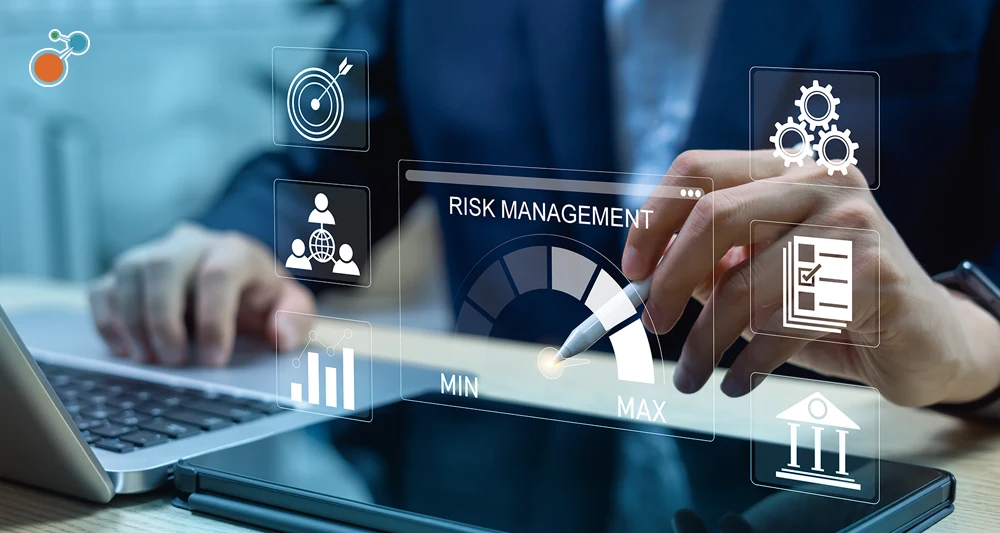The conversation around ERM vs. IRM is often framed as a choice: Which is better? Which should organisations adopt? This framing assumes there’s a clean distinction to begin with, but it’s not that simple.
The concept of IRM (integrated risk management) has sparked debate, reflecting a shift in how organisations think about risk. It’s no longer enough to categorise risk by type or department. Business leaders and regulators now demand a more integrated, real-time view of risk that informs how a business runs. In this context, the comparison of ERM vs. IRM becomes less about competing frameworks and more about evolving perspectives.
The Maturity of ERM
Before IRM, the emergence of ERM (enterprise risk management) represented an earlier shift in risk thought. Instead of managing threats in silos, ERM introduced the idea of a centralised, strategic approach.
With frameworks like COSO and ISO 31000, ERM gave organisations the structure to manage a broad spectrum of risks under a solid methodology. Today, ERM is embedded across industries. AFERM Federal ERM Survey reported in 2022 that 85% of US federal agencies had a formal ERM program, and COSO was cited by 37% of organisations as their predominant framework. In regulated industries, ERM is often a compliance necessity.
What Is IRM? Why It’s Hard to Define
IRM, by contrast, is still a moving target. There’s no single framework and no agreed-upon scope. Definitions vary widely; some see IRM as a new methodology, others still as a natural progression from traditional ERM.
This lack of precision can be confusing, but it also reflects a pattern: risk leaders are struggling to define risk as it becomes more interconnected and less bound by traditional definitions and limits. In that sense, IRM is an attempt to keep pace with shifting ideas.
Competing Visions of IRM
Foundational IRM
Some, like John Wheeler with Wheelhouse Advisors, see IRM as a response to fragmentation in risk. Risk management tools, processes, and data sources have proliferated over time, but they often operate independently. IRM, in this view, is about consolidating them. It’s about centralising data and building a single, cross-functional view of risk. Unlike ERM, which often remains reporting-focused, this vision embeds risk into each process.
Rather than a rebranding of ERM, it can be seen as a deeper integration of capabilities. It’s a shift toward risk as something embedded in business systems, not layered on top.
IRM as Mature GRC
Critics, such as Michael Rasmussen, argue that the concept of IRM is a distinction without a difference. From this angle, it’s simply a modern take on GRC (governance, risk, and compliance); the kind that uses technology more effectively and aligns more closely with strategy. In this view, the term IRM may sound new, but the core ideas are the same.
Critics of IRM see the label as unnecessary. They argue that mature ERM and GRC programmes already do what IRM promises. What’s missing, they say, isn’t a new concept, it’s better execution of existing ones.
IRM in the Broader Evolution of Risk Management
Seen in historical context, IRM is part of a longer arc. Risk management has expanded steadily over time, from insurance, to compliance, and to enterprise-wide strategy. The shift toward IRM thinking is a continuation of that trajectory, driven by the growing complexity of risk management.
What’s different now is the emphasis on interconnectivity. Organisations are recognising that risks don’t emerge in isolation, and they don’t stay in their lanes. A data breach isn’t just a cybersecurity issue – it should be seen as a reputational, regulatory, and operational one, too. IRM reflects a need to account for that complexity. Extending ERM’s reach means enabling business leaders to access risk insights in real time rather than having them rely on board-level reports.
Why “ERM vs. IRM” Misses the Point
The tension between ERM and IRM is often overstated. IRM doesn’t invalidate ERM; if anything, it depends on it. Also, depending on how it’s defined, IRM either enhances ERM’s framework or gives it a more operational foundation.
Choosing the “right” model isn’t the real issue, the real issue is fragmentation. Organisations that manage risk in disconnected systems can struggle to respond quickly to issues. The labels don’t matter if the organisation can’t act on the data it has.
The most effective programmes unify strategy and execution. They treat risk not as a checklist but as a business function; they don’t draw artificial lines between frameworks – they build on them.
Technology Unifies ERM and IRM
Technology makes this convergence between ERM and IRM possible. Risk management software provides the infrastructure to connect disparate data and integrate workflows.
The right platform supports both ERM and IRM principles:
- Centralise risk and control libraries
- Enable real-time analytics and reporting
- Map root causes
- Define risk appetite
- Plan scenarios
- Align strategy and risk posture
Technology breaks silos, it operationalizes strategy, and it gives leaders the visibility they need to act.
The rise of IRM reflects an evolving field. As organisations face more complex, systemic, and fast-moving risks, their frameworks need to keep up. That doesn’t mean abandoning ERM; it means building on it. The real question isn’t what acronym you use, it’s whether you’re making risk a driver of strategy.
For more on information on enterprise risk management and integrated risk management, download our ebooks, Charting a Course for Enterprise Risk Management and Conquering the New World of Risk with Integrated Risk Management, and check out Riskonnect’s ERM software.







